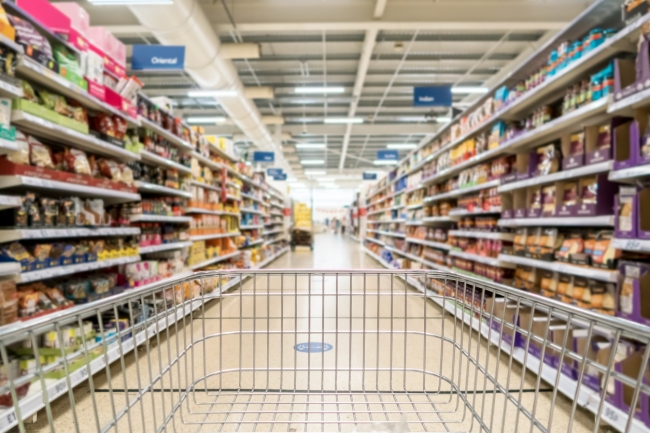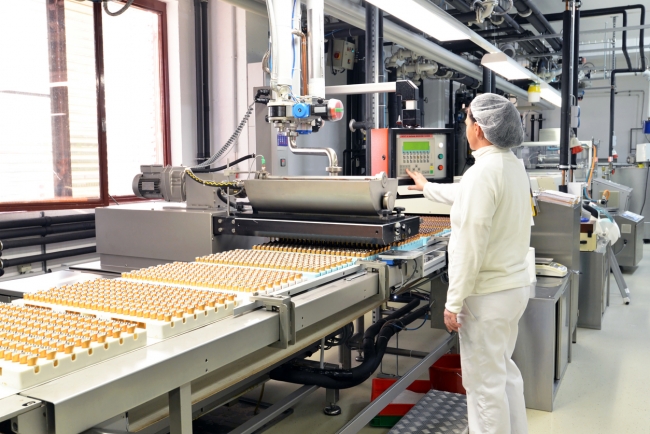5 minute read • published in partnership with Cimlogic
Insight: 10 top tips to avoid a costly product recall
Over the years product recalls have cost organisations billions in lost revenue, damaged brand reputation and reduced consumer confidence. Food and beverage and consumer packaged goods manufacturers demand high volumes at low margins. As production rates increase to meet consumer demands and expectations, maintaining optimum quality is vital. The team at Cimlogic shares some advice and their 10 top tips to avoid a costly product recall.
According to the Incidents and Resilience Annual Report, the FSA was notified of 2,336 food and feed safety incidents in England, Northern Ireland and Wales during 2021/22, an 18% increase when compared to the previous year. The number of alerts issued increased from 141 in 2020/21 to 150 in 2021/22 – this included 84 Allergy Alerts and 66 Product Recall Information Notices¹.
Unsafe products or products of poor quality are still reaching consumers, and manufacturers need to do everything they can to avoid them.

Ideally, manufacturers need to avoid recalls by identifying issues before products are shipped and reach supermarket shelves / Picture: Getty/iStock
Over the last few years technology and processes for traceability and quality management have improved greatly, so why are there still so many product recalls? Could complex global supply chains create higher risks in food safety? Could both improved systems and tighter regulations mean issues are more easily identifiable? But, why are these issues still making it out of the factory door and onto the supermarket shelves?²
Bad news travels fast in today’s digital world, so far more people will likely see a recall notice. Product recalls have a damaging effect on brand reputation, distributors’ confidence, and worst case scenario, the potential to reduce market share and decrease profits. Ideally, manufacturers need to avoid recalls by identifying issues before products are shipped.
Ask yourself:
• What is the cost of rework?
• What is the cost of labour associated with quality losses or rejects?
• What is the cost of losing market reputation for poor-quality products?
• What is the cost of customer satisfaction?
Top ten tips to reduce the risk of a costly product recall:
1) Get to know your Marketing and PR department
Help your Marketing and PR team to understand the products you manufacture, how the process works, where problems might occur, and which distributors would be affected. This will help them to form crisis management strategies and prepare tactics for different scenarios.
2) Audit raw ingredients/components regularly
Check your supplier processes, quality standards and recall plans. Are your suppliers meeting legal requirements? Can each batch be traced? What is their biggest risk? If your suppliers have an issue with their products, will it have a major impact on your operations?
3) Ensure that all machinery has auditable records
All tools, machinery and equipment within your facility must be kept fully serviced and have auditable records. Recalls, especially in the food and beverage sector are often due to suspected or actual contamination by machine parts. You should also ensure storage and transport facilities are in full working order.
4) Ensure your processes and policies are up-to-date and being completed
Are your current processes being followed? Are all relevant staff fully trained? Carry out unannounced spot checks and ensure that staff feel competent enough within their roles to make sound quality decisions. All training, competencies, checks and controls must be recorded, to demonstrate due diligence. Sometimes, mistakes do happen, but you will need to demonstrate that you have done everything in your power to avoid them.

As production rates increase to meet consumer demands and expectations, maintaining optimum quality is vital / Picture: Getty/iStock
5) Create a culture of continuous improvement
Safety and quality should always be valued higher than increased production quotas. Sustainably increasing production whilst maintaining and improving quality should be the ultimate goal. Ensure that the ethos is communicated to all departments, not just quality.
6) Have a recall plan in place
Who do you need to contact – government authorities, suppliers, distributors? What is your plan of action? What information will you have to hand, and who needs to know it? Run through the recall plan with key personnel, PR and distributors. Having an effective recall process in place and containing the problem before it continues through the supply chain can mean escaping unnecessary costs.
7) Have adequate insurance cover
Ensure that your insurance covers everything. Recalling products is costly; your plant may have to shut down if an investigation is required, production lines will be halted, and your overheads will still need to be paid. Your customers may lose confidence and you may lose them. You may also require extra funds for a PR campaign to re-strengthen your brand and customer confidence.
8) Consider adopting digital technology to reduce the risk
Adopting digital technology such as a quality management System (QMS) ensures that recalls can be targeted quickly and efficiently, reducing the impact of the recall. Real-time quality and traceability data from across operations can prevent product recalls from happening and gives manufacturers the ability to take control if a recall should occur, enabling optimum product and safety recall responsiveness, whilst protecting the brand. Having such systems will reduce the likelihood of any issues being shipped out of the door, enabling you, and your PR team to sleep at night!
9) Quality processes need to be integrated with operations
Quality needs to be an integrated function within operations for it to yield truly beneficial results. It happens frequently; 2-3 days after a batch run, the results are in from Quality Control and the whole batch needs to be scrapped! Often shop floor operatives will capture data, not truly understand it, and pass it off to someone else. Whereas the specialised, stand-alone data analysis performed in QC will give you results and insight. Bringing QC and operations together, in-process quality checks coupled with real-time results will enable step changes in production quality results.
10) Engage & empower operations personnel
Engage and empower operators throughout the production cycle, by providing real-time feedback, or notifications of rule violations, upcoming tasks or HACCP checks and workflows if something is trending out of specification. Ensure employees know the standards required, what may happen if that standard is not reached and what action to take. Providing actionable intelligence, and giving the right information to the right people at the right time will no doubt encourage quality improvements.
The Quality Management guide offers expert insight into the common quality challenges facing food and beverage and FMCG manufacturers and what steps can be taken to improve quality processes. Download here for top tips on how to improve yield, reduce waste, and avoid costly product recalls.
